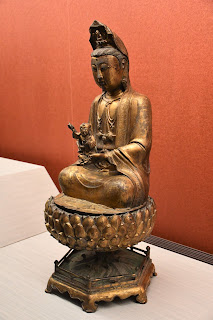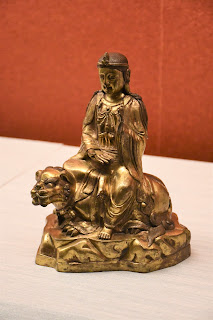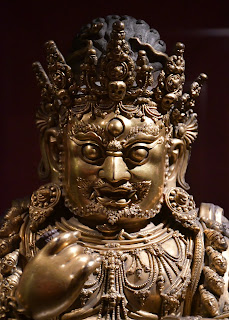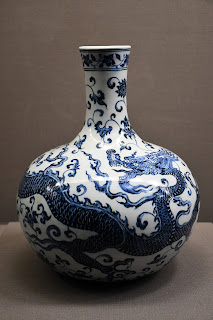National Palace Museum
Exams are
coming up next week, so even though my feet have been feeling a little
restless, I decided I would not go anywhere far this weekend and focus on
studying. My resolve weakened as soon as I woke up on Saturday morning, for the
sun was shining and it looked like we were going to have a nice day. I ploughed
through my work anyway, telling myself that if I finished early, I would go out
and see a temple or a monument in the afternoon. The weather, however, was not
on my side, and by midday, the wind had picked up and a light drizzle came over
the city. By that time, I was already so excited to get out that the weather
was not going to stand in my way. I remembered that I had been putting off a
trip to the National Palace Museum for an ugly day, so I packed my camera bag
and set off.
Reaching
the National Palace Museum is not as easy as reaching other sights in Taipei, because
it is not very close to any metro station. I took the metro to Shilin station on
the red line, where I was pleasantly surprised to find very clear directions on
how to continue to the museum by other public transport. I boarded a tiny
shuttle at the corner of the block, which brought me straight to the museum
entrance. My guidebook said that Saturday evening was the best time to visit,
but once I arrived, I found that opening times had been significantly
restricted because of the coronavirus scare. I had plenty time regardless.
The
National Palace Museum, despite its enormous repository, is remarkably ‘visitable’.
It would be easy, with the number of items in storage, for the curators to
completely overwhelm guests, but the items on display seemed to have been very
carefully selected and appeared representative of the collection as a whole. My
favourite part of the museum was its “Special Exhibition of Envoys Presenting
Tribute.” The exhibition featured paintings, even mini-ethnographies, of
nations that paid or were perceived to be paying tribute to the Chinese Emperor.
There were even several paintings of indigenous Taiwanese people. What fascinated
me most about the whole exhibition was the commitment to cataloguing these
different cultures by Chinese historians.
Avalokiteshvara Bodhisattva holding a child
Avalokiteshvara Bodhisattva seated on what seems to be a dog
Large gilt Buddha statue
Vajrapani Bodhisattva
The famous 17 concentric ivory balls, called "the work of celestial beings"
A set of botanical illustrations
A man leading a giraffe in the "Special Exhibition of Envoys Presenting Tribute"
A couple from the Southwest
The Miaozu of Guangxi
The indigenous people of the Changhua coast in Taiwan. Note the deerskin clothing for which Taiwan was traditionally known, and which was exported to China from what is now Changhua County.
The Indigenous people of Alishan. Note that despite wearing a deerskin coat on top of another set of clothing, the woman's torso has been left bare. My guess is that this is to reinforce the perceived "savageness" of the depicted 生番 or "uncooked barbarian"
A couple from the mountains of Changhua. The only Taiwanese depicted here not wearing dearskin clothing. I wonder whether the woman's necklace is pearl and red coral, another set of exports for which Taiwan is known.
The indigenous people of Tamsui. Note the light, Sinified complexion of these figures. It is unclear to me whether the painter did not know better, or whether there is a politicised undercurrent to their physical features.
A porcelain vase with a dragon
A porcelain stupa
A porcelain chrysanthemum kettle
Another kettle with floral patterns
The entrance to the National Palace Museum, as viewed from the front of the main building
The main exhibition hall of the National Palace Museum






















Comments
Post a Comment